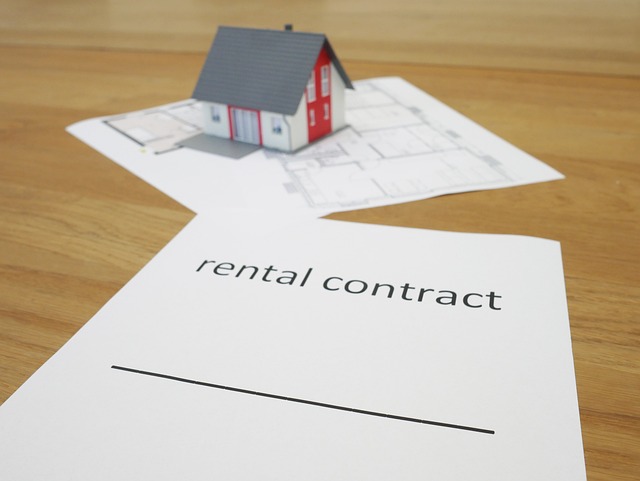Lease-to-Own Homes: A Flexible Route to Buying
Lease-to-own (also called rent-to-own or lease-option) gives renters a practical way to move toward homeownership when traditional mortgages aren’t yet possible. Learn how option fees, rent credits, and fixed purchase prices work, plus the benefits, risks, and search strategies to find lease-to-own homes near you. Discover whether this flexible pathway suits your financial goals and timeline.

Rent-to-own arrangements blend renting and buying, offering a transitional route for people who need more time to qualify for a mortgage or save for a down payment. These agreements let a tenant live in a home with an exclusive option to purchase it later, often providing both parties flexibility and potential financial benefits. Below, the structure, advantages, pitfalls, and practical tips for pursuing a lease-to-own deal are explained in clear, actionable terms.
How lease-to-own works
A lease-to-own transaction typically combines a standard lease with an option contract. The tenant pays an upfront option fee that secures the right (but not the obligation) to buy the property at a pre-agreed price within a set timeframe, usually one to three years. Monthly rent may be slightly higher than market rate because part of the payment can be credited toward the future purchase. At the end of the lease, the tenant can exercise the purchase option if they qualify for financing and decide to buy the home.
Advantages for prospective buyers
For renters aiming to become homeowners, lease-to-own deals offer important benefits. They allow occupants to live in the exact property they hope to buy, giving them a chance to confirm the neighborhood, layout, and local amenities before committing. The lease period also provides time to improve credit scores, steady income records, and build savings for a down payment. Rent credits and the option fee can reduce the upfront cash needed when the purchase is made. For those unable to secure a traditional mortgage immediately, this path can bridge the gap between renting and owning.
Advantages for sellers
Sellers gain advantages as well. In slower markets or with homes that have been difficult to sell, lease-to-own terms can attract more buyers by offering flexible financing. Sellers can collect an option fee and often a higher rent while retaining the potential for a future sale. Having a long-term tenant who has a vested interest in the property’s condition can reduce vacancy and maintenance problems compared with short-term rentals.
Key terms to understand before signing
Knowing the common components of these contracts is essential:
- Option fee: A nonrefundable payment that secures the purchase option. Amounts vary by market.
- Purchase price: The sale price can be fixed at the start of the lease or tied to a market appraisal when the option is exercised.
- Lease term: Typical durations are one to three years but can be negotiated.
- Rent and rent credits: Monthly rent may include a premium; a portion can be credited toward the down payment.
- Maintenance obligations: The contract should clearly state whether the tenant or owner handles repairs and upkeep.
- Purchase option mechanics: Details on how the buyer exercises the option, timelines, and financing contingencies must be spelled out.
Carefully review payment schedules, what happens if rent is late, and whether credits are forfeited if the purchase doesn’t proceed.
Potential risks and how to mitigate them
Lease-to-own arrangements present specific risks for both sides. Buyers risk losing the option fee and any accrued rent credits if they cannot obtain financing or choose not to buy. If property values fall, they might be obligated to buy at a price higher than current market value if the price was fixed. Sellers risk tying up their property while a prospective buyer decides not to exercise the option, and could face legal disputes over contract terms or maintenance disagreements.
To reduce risk, buyers should get a realistic assessment of their mortgage prospects before committing large option fees. Include clear clauses addressing crediting, defaults, and contingencies for financing. Sellers should vet potential tenants carefully, check credit and rental history, and include firm timelines and remedies in the contract.
How to locate lease-to-own homes
Lease-to-own listings are less common than standard sales or rentals, so be proactive:
- Work with a real estate agent experienced in lease-to-own deals.
- Search online listings and use keywords like “lease-option” or “rent-to-own.”
- Check community classifieds and bulletin boards.
- Attend real estate investor meetups or local auctions where sellers and investors network.
- Ask property management firms if they run rent-to-own programs.
Networking with investors and agents often uncovers off-market opportunities.
| Component | Typical Range | Notes |
|---|---|---|
| Option fee | $1,000–$5,000 | Nonrefundable; varies by market |
| Monthly rent premium | $50–$300 extra | Portion may be credited toward purchase |
| Rent credits per month | $100–$500 | Applied to down payment or price |
| Lease term | 1–3 years | Negotiable based on needs |
Cost disclaimer: The figures above are estimates and will vary by location, property condition, and individual agreements. Consult a real estate professional for precise costs and tailored guidance.
Final considerations and next steps
Lease-to-own can be a practical bridge to homeownership when a buyer needs time to qualify for a mortgage or accumulate a down payment. It can also help sellers move difficult listings while generating income. However, success depends on careful contract drafting, realistic financial planning, and professional advice. Before signing any lease-option agreement, have the contract reviewed by a real estate attorney and discuss financing strategies with a mortgage broker. With thoughtful planning and clear terms, a lease-to-own arrangement can be an effective and flexible path from renting to owning.






